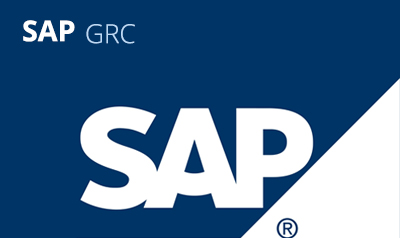Custom Notification in SAP® GRC
Unlock Granular Control: A Guide to Custom Notifications in SAP® GRC
In the world of SAP Governance, Risk, and Compliance (GRC), communication is everything. Timely, accurate, and actionable notifications are the lifeline that ensures compliance processes run smoothly. Out-of-the-box, SAP GRC provides a solid foundation of standard alerts. But what happens when your unique business process requires more? What if you need to notify a specific group of managers when a risk is triggered, or alert an external auditor when a critical access request is approved?
This is where the power of Custom Notifications comes in. Moving beyond the standard templates allows you to tailor communication flows to your organization’s exact needs, enhancing efficiency, clarity, and control.
Why Go Custom? Beyond Standard Alerts
While standard notifications handle common scenarios, custom notifications are essential when you need to:
-
Notify Additional Stakeholders: Inform line-of-business managers, external auditors, or compliance officers who aren’t part of the standard workflow.
-
Trigger Based on Specific Conditions: Send an alert only when a risk is deemed “High” severity or when a request exceeds a certain financial threshold.
-
Enhance Message Content: Include custom fields, specific instructions, or links to internal wikis that aren’t available in the standard template.
-
Automate Escalations: Create rules to automatically escalate notifications if a task is not completed within a defined timeframe.
-
Integrate with External Systems: Format a message to be parsed by a downstream ticketing system like ServiceNow or Jira.
How It Works: The Building Blocks of Custom Notifications
Creating a custom notification typically involves a few key components within the GRC platform, particularly in Access Control (AC) and Process Control (PC):
-
Defining the Event: First, you identify the precise trigger event in the GRC workflow. This could be:
-
Access Request Status Change (e.g., Approved, Rejected, Submitted for Review)
-
Risk Mitigation Completed
-
Control Failure in Process Control
-
User Provisioning/De-provisioning Action
-
-
Configuring the Rule (BRF+): SAP GRC often uses the Business Rule Framework plus (BRF+) as the engine for defining notification logic. Here, you build a rule that states: “IF [this event occurs] AND [these conditions are met], THEN send [this notification] to [these recipients].”
-
Crafting the Message Template: This is where you design the content of the email or workflow inbox alert. You can use placeholders (e.g.,
&USER_ID&,&ROLE_NAME&,&RISK_DESCRIPTION&) that the system will dynamically replace with real data when the notification is sent. -
Assigning Recipients: You can define recipients statically (a specific email address), dynamically (based on a value like “Risk Owner”), or by role (all users with a specific GRC role).
A Practical Example: Custom Alert for High-Risk Role Assignments
Scenario: You want to automatically notify the Chief Information Security Officer (CISO) whenever a high-risk role is approved for any user.
Steps to Implement:
-
Event:
Access Request Approved -
Condition (BRF+ Rule):
IF Approved_Risk_Level = "HIGH" -
Recipient:
CISO_Email_Address(or a distribution list) -
Message Template:
-
Subject: Alert: High-Risk Role Approved – Action May Be Required
-
Body:
Dear CISO Team,
A high-risk role has been approved for a user.
User: &USER_ID&
Role: &ROLE_NAME&
Approver: &APPROVER_ID&
Justification: &JUSTIFICATION&Please review this assignment in transaction GRACSPROXY for further action.
This is an automated message from the SAP GRC System.
-
Best Practices for Implementation
-
Start with a Clear Requirement: Document the business need before touching the system. What problem are you solving?
-
Leverage BRF+ Expertise: This powerful tool is key to flexibility. Ensure your team or consultant is proficient in it.
-
Avoid Notification Fatigue: Be selective. Too many alerts can lead to important ones being ignored. Use conditions wisely.
-
Test Thoroughly: Rigorously test custom rules in a development environment to ensure they trigger correctly and that the message content is accurate and clear.
-
Maintain Documentation: Keep a log of all custom notifications, their purpose, and their configuration. This is crucial for future upgrades and troubleshooting.
Conclusion
Custom notifications transform SAP GRC from a monolithic compliance tool into a dynamic and integrated control center. By investing in this capability, you move from simply running processes to actively managing your compliance environment with precision and foresight. It’s a powerful step towards a more automated, transparent, and efficient governance model.

